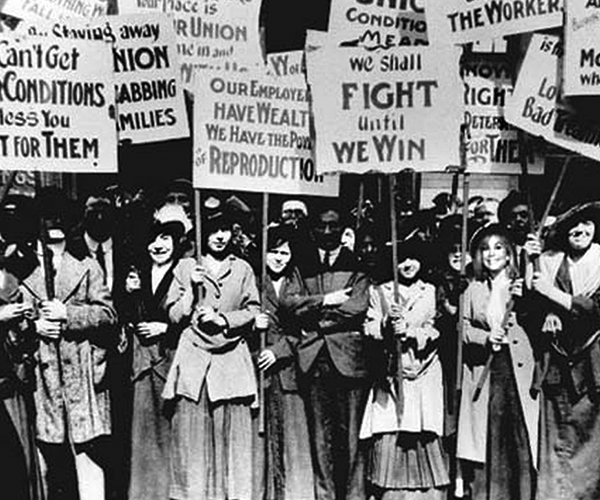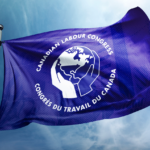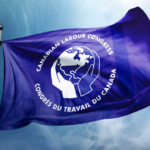
Overview and context
Budget 2015 sticks closely to the federal government’s seven-year script of spending cuts, restrained investment and tax measures largely benefiting wealthy Canadians. The 2015 budget has been advertised as the return to balance after 7 years of deficits, a period of red ink prolonged by massive tax cuts that further weakened an already sluggish recovery and added some $150 billion to the federal debt. This year’s budget caps multiple rounds of spending cuts and six years of falling direct program spending beginning with the 2010 budget. Spending cuts reached $14.5 billion a year by 2014-15, nearly $90 billion cumulatively since 2010.
The Conservative government’s pursuit of deep and extensive tax cuts have lowered revenue significantly below 1990 levels. In the nearly 10 years between Budget 2006 and the October 2014 ‘Family Tax Package’, Conservative tax measures have resulted in lost revenues of $330 billion. This is equivalent to almost 17% of annual GDP, and over half of total federal debt. Of the total revenue loss from Conservative tax measures, $72 billion has gone to corporate income tax cuts. If federal revenue as a proportion of the economy reached the same level today as it did in the year 2000, an extra $50 billion in revenues would be available today. The cuts supposedly needed to balance the budget would not have been necessary.
Major Expenditures in Budget 2015
Several major expenditures in the 2015 budget were announced late in 2014 or leaked prior to April 21st, 2015. Income splitting, the increase in the Universal Child Care Benefit (UCCB) and the increase in the Child Care Expense Deduction, all announced in October 2014, were confirmed in Budget 2015. The cost is a whopping $27 billion by 2019-2020, most of which will come from the UCCB increase. Nearly all of the benefits of income splitting will flow to the 15% highest-income Canadian families, while half of UCCB recipients are families without child-care expenses.
The annual contribution limit for Tax Free Savings Accounts (TFSAs) will increase from the current $5,500 to $10,000, at an estimated cost to federal revenues of $1.1 billion by 2019-2020. Even at the maximum annual contribution of $5,500, the TFSA is projected to cost the federal government up to $15.5 billion annually and the provinces another $8 billion when the program is fully mature in 40 to 50 years. TFSA doubling would further increase this cost, almost exclusively to the benefit of the highest income earners.
The budget also confirmed $5.8 billion in federal infrastructure investment over 6 years beginning in 2014-15. Minister Oliver announced meagre new municipal transit funding of $250 million in 2017-18, rising to $500 million and $1 billion in 2018-19 and 2019-20. The funding will go to PPP Canada to support P3 investments, despite the Ontario Auditor-General’s recent findings of pervasive waste, dubious accounting, lack of transparency, and costly liabilities retained by government in Ontario’s P3 projects.
Budget 2015 commits to further reducing the small business tax rate from 11% to 9% by 2019, at a cost of $3.4 billion by 2019-2020. Budget 2008 had reduced the small business tax rate from 12% to 11% and increased the amount of income eligible for this lower rate to $400,000 in 2007, and to $500,000 in 2009. The 2013 budget also raised the Lifetime Capital Gains Exemption on qualified small business shares to $800,000, and indexed the limit to inflation.
Finally, the government will increase defense spending by $12 billion over 10 years beginning in 2017-18.
Balanced Budget
he government projects a $1.4 billion surplus in 2015-16. Finance Minister Oliver achieved this by running down the contingency fund, selling the Government of Canada’s shares in General Motors, and applying the Employment Insurance Operating Account surplus to consolidated revenues.
Direct program spending is projected again to rise after 4 consecutive years of decline, but departmental spending lapses remain high; Budget 2015 projects that $6 billion will go unspent lapse in departmental budgets in 2015-16.
The Conservative government now proposes balanced budget legislation that would automatically freeze operating budgets in the event of a deficit, precisely when governments should be spending to counteract the larger contraction in economic activity occurring in the midst of a recession.
Investment and Job Creation
Budget 2015 leaves in place the 40,000 job losses in the federal public service and Crown corporations inflicted since 2010. Canada Post and the Canadian Broadcasting Corporation appear nowhere in the budget. The various measures to improve services for veterans restore roughly 200 of the 950 full-time equivalent veterans-services positions eliminated by the Conservative government.
Instead of direct job creation, Budget 2015 relies on tax cuts to create employment, with a much weaker impact on jobs. The Small Business Job Credit, announced in September 2014, lowers EI premiums for eligible small businesses, but would create just 800 jobs over 2 years, according to the Parliamentary Budget Office. Undeterred, Budget 2015 commits to EI premium reductions beginning in 2017, following on a 3 year premium freeze.
The budget also announced a 10-year accelerated capital-cost allowance of 50% for manufacturing and processing.
Rather than extending access to EI benefits among unemployed Canadians, the annual surplus in the EI Operating Account ($3.4 billion in 2015) will be applied to the government’s bottom line, before premiums fall by 21% in 2017.
Currently, claimants can keep 50 cents of their EI benefits for every dollar they earn, up to a maximum of 90 per cent of weekly insurable earnings. Budget 2015 provides $54 million over two years to extend the current EI working while on claim pilot project to August 2016. EI Compassionate Care Benefits will also be extended from 6 weeks to 6 months.
Budget 2015 contains little in the way of new investment in education and skills training. The government commits to continuing to work with provinces and territories to renegotiate the Labour Market Development Agreements (LMDAs) and harmonize apprenticeship training and certification requirements in targeted Red Seal trades. The government missed the opportunity to require employers funded through the New Building Canada Fund and the Investment in Affordable Housing program to hire and train apprentices.
The budget extends Canada Student Grants access to Canadians enrolled in short-duration programs, and makes small changes to the Canada Student Loans program, while failing to take any steps to address high tuition fees and onerous student debt levels.
The 2015 budget announces a 5-year renewal of the Aboriginal Skills and Partnership Fund, first introduced in the 2010 budget with a $210 million commitment over 5 years. The budget also announces small funding reallocations in support of a new labour-market information portal, immigrant and youth labour mobility, and the Foreign Credential Recognition Loans pilot.
Social Program Spending
The 2015 budget is remarkably silent on the health care challenges facing Canada. The budget maintains the government’s commitment to reduce the Canada Health Transfer from 6% to the rate of GDP growth (with a minimum 3% commitment), amounting to as much as a $36 billion cut from health care. There is no mention of the need to negotiate a new funding arrangement with the provinces; no mention of the need for pharmacare or a coordinated drug purchasing program; no mention of a seniors’ strategy for Canada; and no mention of an aging Canada’s long-term care needs. What the government did announce was $42 million over 5 years for a Canadian Centre for Aging and Brain Health Innovation, and $14 million over two years to provide targeted support for innovation in health systems. There is also a commitment to renewing the Mental Health Commission of Canada for another 10 years.
On retirement security, the budget ignores the need to expand public pensions for working Canadians. Instead, the government relaxed the minimum amounts that must be withdrawn from Registered Retirement Income Funds when individuals with RRSP savings reach age 71. This will benefit baby boomers with RRSP savings, but do little for workers today without the means to save through RRSPs. Around a third of eligible Canadians today contribute to RRSPs, while unused RRSP contribution room reached $790 billion in 2013. As part of its measures targeted at veterans, the budget introduces a New Retirement Income Security Benefit for disabled veterans that would effectively guarantee a pre-retirement income replacement level after age 65. The government remains committed to exploring target-benefit plans in the federal private-sector and for Crown corporations.
Instead of a real child care program, Canadians got income splitting, an increase in the Universal Child Care Benefit, and a $1000 increase in the Child Care Expenditure Deduction.
Federal Labour and Employment Relations
Despite a rhetorical commitment to good faith bargaining with public service unions, the government signaled its intention to move forward with eliminating employees’ existing sick leave benefits and imposing a short-term disability plan instead. Budget 2015 goes so far as to book the savings from this planned step by applying $900 million to government revenues in the current fiscal year.
The Budget proposes a series of measures, minus any details, to reform the Canada Labour Code. The government intends to propose amendments ensuring that interns receive health and safety protections, and clarifying when unpaid internship positions can be offered. Having legislated significant changes to Part II of the Canada Labour Code in 2013, Budget 2015 proposes to hire back 10 health and safety officers to ensure compliance under the Code. The federal government also promises to bring forward amendments to the Code to address violence and sexual harassment in federally-regulated private-sector workplaces.
The government will propose additional amendments to the Code providing for new short-term and long-term unpaid leaves for family responsibilities, and increased bereavement leave to allow employees to balance work and informal caregiving. In multiple rounds of negotiations with federal public service unions, Treasury Board has sought to collapse various leave provisions into a single (reduced) employee bank, which the government may have in mind here for workers falling under the Code.
Environment
In line with the Conservative government’s record on the environment, this budget offers next to nothing in the way of environmental protection. The budget lacks a single mention of climate change. Under a small section entitled “Protecting Canada’s Environment,” the government commits some back-loaded funding to “continuing” or “renewed” support for the Species at Risk Act, the Pacific Salmon Foundation, the Recreation Fisheries Conservation Program, the Chemicals Management Plan, the Federal Contaminated Sites Action Plan, and for meteorological and navigational warning services in the Arctic. The government fails to offer any comprehensive plan to reduce greenhouse gas emissions, meet international climate change commitments, or ensure a safe and healthy environment for Canadians and future generations.
Conclusion
Budget 2015 marks the latest and perhaps the last Conservative austerity budget that has carried Canada down the road of slow economic growth, deteriorating infrastructure and public services, pervasive labour-market insecurity and upward transfer of wealth and income. The budget further erodes the fiscal capacity of the Canadian state, rejecting the opportunity to take advantage of exceptionally low borrowing costs and invest in the current and future needs of working people. Attempting to lock in the current government’s program of starving public services, advancing privatization, and shifting resources to top income-earners, Budget 2015 hopes to reinforce the message that working people can expect to receive little in the way of help, and only adversity, from Ottawa. The stage is now set for the debate over Canada’s future in October 2015.




